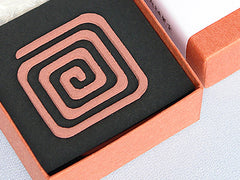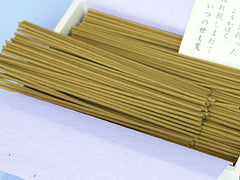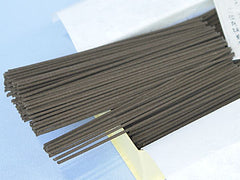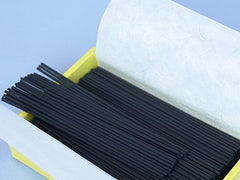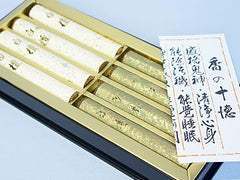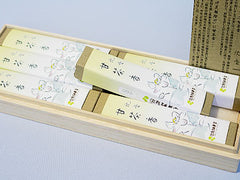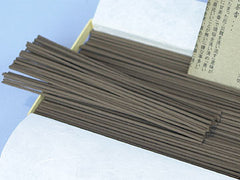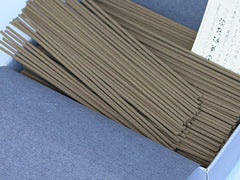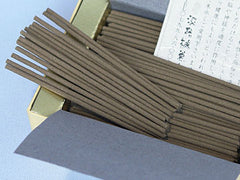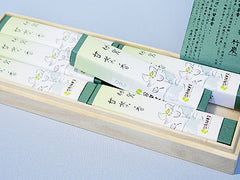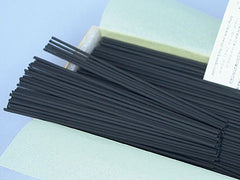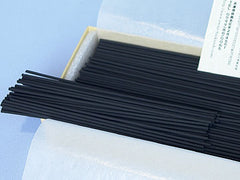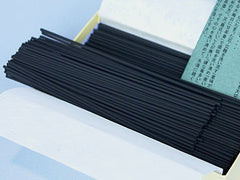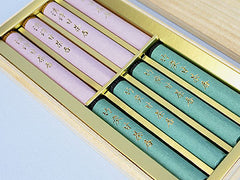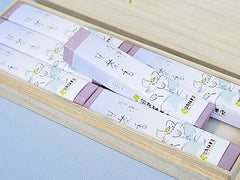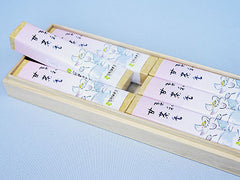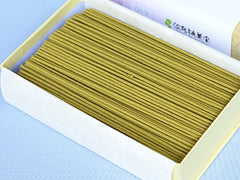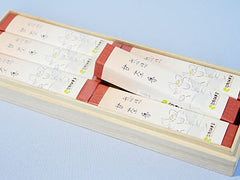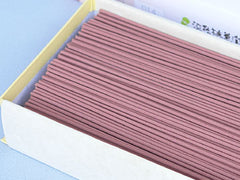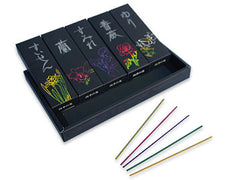
A mature fragrance made with pure natural ingredients and artisanal techniques
Burning incense containing chemicals for a long time can often cause a sore throat, but these incense sticks are made with natural ingredients, so there's no need to worry. "Since offering incense is something you do every day, I want you to use incense that is gentle on both mind and body. Also, since incense sticks are a Buddhist meal, I want you to treat your ancestors with a gentle, natural fragrance," says incense master Yano . It's the skilled craftsmanship that makes this purely natural incense possible. While machines require the addition of chemical glue to adjust the stick's stick ...
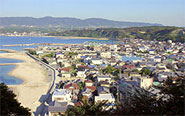
Incense made from the "West Wind" of Awaji Island, a famous fragrance producing region
Awaji Island is Japan's leading producer of incense, accounting for 70% of the nation's total.
Its history began in 1850, when the manufacturing techniques of Sakai in Senshu were introduced to Ei, Awaji City. At the time, Ei was engaged in trade as a naval port for the Tokushima Domain, providing convenient routes for importing and selling raw materials, and Awaji Island's incense became widely known throughout the country.
The main reason incense production took root in this area is the "westerly winds" unique to Awaji Island. Drying the incense in the strong seasonal winds creates a mature, mellow fragrance.
How Awajibaikundo's incense is made.
(1) Mixing, stirring, kneading, and kneading ballsThe
raw materials prepared for each brand are stirred and kneaded with dye and water, while paying careful attention to temperature and humidity.The kneaded material is placed in a mold and formed into a cylindrical shape called a knead ball, approximately 30 cm in diameter.

(2) Extrusion and Cutting into Pieces
The kneaded ball is placed in an extrusion machine, extruded into a linear shape through a hole called a "sukin" (a metal slot), received on a tray, and cut with a bamboo spatula.

(3) Shaping
Place the incense sticks on the tray on the drying board without any gaps and trim them to the appropriate size.

(4) Drying
The pieces are then moved to a drying area where they are dried slowly and naturally for a week, taking advantage of the strong westerly winds that are unique to Awaji Island, allowing them to settle.

(5) Bundling
The finished incense sticks are bundled under strict visual inspection.

(6) Aging and Completion
Depending on the product, the product is matured for a period of approximately one month to one year, after which it is packaged and boxed.
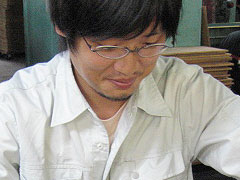
A word from the craftsman
Incense is a food for the Buddha. We hope you will use the gentle fragrance of natural fragrant wood to welcome your ancestors. You can also use it as incense when you are feeling tired, as it has a soothing scent that is gentle on the mind and body.
